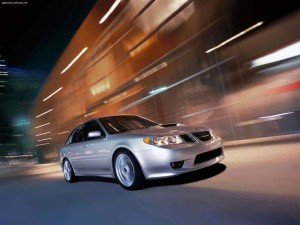Struggling Swedish automaker Saab will formalize a new alliance with its erstwhile German rival, BMW, later this week. The long-rumored deal should provide “technology” for Saab’s downsized 9-2 model and possibly other additions to its line-up, the maker has confirmed.
Purchased from General Motors by Dutch-based Spyker, early this year, Saab has laid out an ambitious plan to reverse years of red ink, but the company’s Chairman Victor Muller, has acknowledged it doesn’t have the money to bring all the necessary products to market and needs to find allies – such as BMW.
The alliance, which will reportedly be signed on Wednesday, would give Saab access to what is being described as BMW parts and technology. Specifics remain to be seen and could include anything from individual components, such as a small gas or diesel engine, up to and including an entire small car platform.
The initial manifestation of this new partnership will be in the form of the proposed Saab 9-2, a small car of similar size to the BMW 1-Series. It is to be a complete replacement for a prior model sold under that nameplate that was based on an old Subaru platform.
In a conversation with TheDetroitBureau.com over the summer, Muller described that model as “at the top of our wish list.” But he emphasized that a partner would be needed because neither Saab nor Spyker had the money to bring a new version of the 9-2 to production on its own. According to Muller, at the time, discussions were underway with several potential partners.
According to a report on Reuters, Spyker actually has a negative net worth having never earned a profit. But it does have 280 million Euros of cash and access to a line of credit approved for Saab worth 266 million. But that money is needed to keep the Swedish going after its near-final shutdown by General Motors.
Muller has said Saab’s goal is to break even with as little as about 80,000 unit sales annually. The maker hopes to come close to achieving that just with global demand for the new 9-5, its flagship sedan. It is also preparing the launch of a new 9-4 crossover and an update for the small 9-3 model.
The 9-2, meanwhile, is expected to generate as many as 20,000 units of volume annually.
In decades past, any alliance between two potential competitors would have been unlikely – or led to the complete acquisition of the weaker of the two. But the industry has shifted directions lately and more modest alliances have become common even among the most unlikely bedfellows, such as Daimler AG, which earlier this year announced a partnership with the Euro-Asian Renault-Nissan Alliance.

